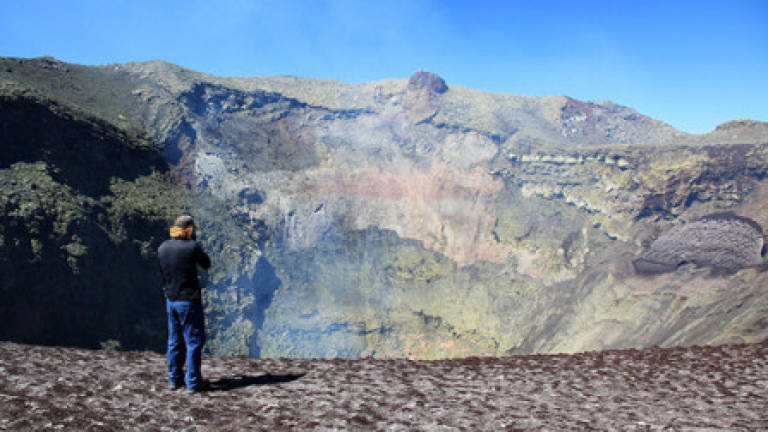Volcano fever: Battle with Chile's giant Villarrica

FROM the peaks of Hawaii to the uplands of Iceland, whether they be active or dormant, volcanos inspire the imaginations of numerous travellers. Relaxnews has gathered all of the necessary information to choose a volcanic destination for every type of vacationer. On this stage of our world tour, we're headed for the Patagonian Cordillera and Villarrica, which is the most active volcano in Chile.
Curriculum vitae
A country with many volcanoes, Chile is notably home to Villarrica, which overshadows the lake of the same name. Located in Patagonia, a region that attracts many visitors, and rising to 2,847 meters above sea level, the mammoth volcano is one of the most active in the country. The most recent major eruption, which happened in 1971, created a 4km long fissure that spewed 30 million cubic meters of lava. In March 2015, several thousand people were evacuated from the surrounding area in the wake of less violent eruption.
Who should visit?
The fiery past of this stratovolcano, which is composed of several successive layers of hardened lava, has not deterred daring visitors. "Villarrica" which means "house of the demon" in Mapudungun language, can be climbed by hiking enthusiasts, who are used to battling with steep gradients. Those who have returned to tell the tale emphasize the importance of correct preparation for a hike, which, depending on the season, can turn into an ordeal. Equipped with trekking poles, helmets, and hiking boots, climbers take four to five hours to reach the summit. The trek requires a full day with an early morning start.
Why this destination?
This is a region that can be visited in both winter and summer. Villarrica is also a popular ski area. A chairlift takes skiers up to the first ridge which is at an altitude of 1,860 meters. While they are up there they have an opportunity to inspect the remains of another ski lift, which was destroyed by the eruption of 1971. For summer vacationers, the first objective is the Pinguinera, which is surrounded by snow-capped peaks. The climax of the trek is the 200-meter diameter crater, where hikers will be greeted by the sight of fumaroles and the sound of magma rumbling under their feet. Last but not least, when they reach the summit climbers are rewarded with a remarkable panoramic view of the region. If they are lucky, will be able to see other volcanoes in the surrounding area, and as far away as Argentina.
How to get there?
Several bus companies operate services on the 800-km route between the Chilean capital Santiago and the resort town of Pucon, which is the main point of departure for exploring Villarrica. When planning your departure from Santiago, it is important to consider the weather conditions that you might encounter on your trek. On arrival in Pucon the best option is to engage the services of a professional guide, who will be aware of any safety risks involved visiting the mountain. — AFP Relaxnews